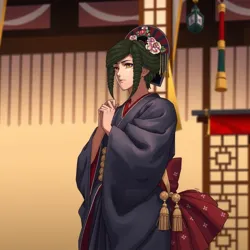Traditional Art Form
Traditional art forms are artistic practices that have been passed down through generations, often deeply rooted in the cultural heritage and history of a society. These art forms can include a wide range of expressions, such as music, dance, theater, visual arts, and crafts. They play a crucial role in preserving cultural identity and are often celebrated for their beauty, technique, and historical significance.

Characteristics
Traditional art forms are typically characterized by their adherence to established rules, techniques, and aesthetics. They often reflect the values, beliefs, and customs of the community from which they originate. Many traditional art forms, such as Kabuki theatre, have strict guidelines regarding performance and presentation, ensuring the preservation of their authenticity over time.
One of the defining features of traditional art forms is their use of symbolism and storytelling. For instance, in Noh theatre, masks and gestures convey complex emotions and narratives, allowing performers to communicate with their audience in a profound way. Similarly, traditional dances and music often incorporate symbolic movements and sounds that hold cultural significance.
Preservation and Evolution
While traditional art forms are rooted in history, they are not static. They evolve over time as they are influenced by new cultural and social dynamics. This evolution is crucial for their survival, allowing them to remain relevant in a modern context. For instance, the anime series "Nihon No Yume" highlights how traditional Japanese art forms are integrated into contemporary storytelling, showcasing their enduring appeal and adaptability.
Efforts to preserve traditional art forms often involve documentation, education, and performance. Cultural institutions and governments may establish programs to support artists and artisans, ensuring that traditional skills and knowledge are passed down to future generations. Additionally, festivals and exhibitions play a vital role in celebrating and promoting these art forms on a global scale.
Influence on Contemporary Art
Traditional art forms have a significant impact on contemporary art and culture. They serve as a source of inspiration for modern artists who seek to explore and reinterpret their cultural heritage. This fusion of traditional and contemporary elements can lead to innovative artistic expressions that resonate with diverse audiences.
In the context of cultural heritage, traditional art forms offer a window into the past, providing insights into the historical contexts and societal values that shaped them. As such, they continue to inspire dialogue and exchange between cultures, fostering a deeper understanding and appreciation of the world's artistic diversity.
See Also
- Renaissance of Tradition: A movement focused on revitalizing traditional art forms through modern reinterpretations.
- Cultural Horizons: An exploration of the impact of globalization on traditional artistic practices.
- Mythic Expressions: A study of how folklore and mythology are represented in traditional and contemporary art.
References
- "Preserving the Past: The Role of Traditional Art Forms in Modern Society." Journal of Cultural Heritage.
- "Traditional Art and Its Influence on Modern Creativity." Art and Culture Review.
Traditional art forms continue to be a vital part of cultural identity, bridging the gap between history and modernity and enriching the global artistic landscape.